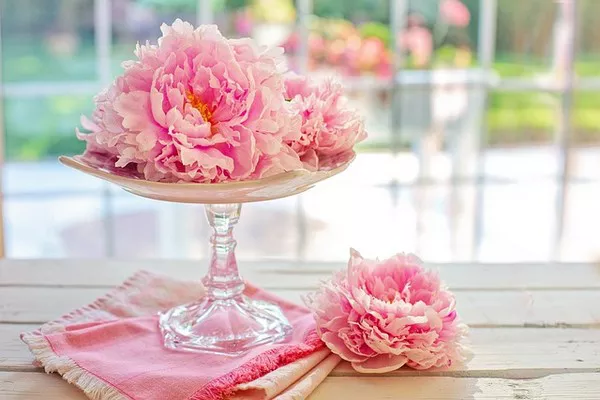Flower arrangement is an age-old art form that has captivated cultures worldwide for centuries. From simple, elegant compositions to elaborate displays, the beauty of floral design lies in its ability to evoke emotion, convey meaning, and enhance any space. Whether you’re a seasoned florist or an enthusiastic beginner, understanding the basic types of flower arrangements is essential for mastering this art form. In this comprehensive guide, we’ll delve into the five fundamental types of flower arrangements, exploring their techniques, aesthetics, and applications.
1. Ikebana: The Japanese Art of Floral Design
Originating in Japan centuries ago, Ikebana is revered as one of the most revered forms of floral artistry. Also known as Kado or the “way of flowers,” Ikebana emphasizes minimalism, balance, and harmony. Unlike traditional Western arrangements, which focus on fullness and symmetry, Ikebana celebrates negative space and asymmetry, reflecting the Japanese aesthetic of Wabi-Sabi.
Ikebana arrangements typically consist of a few carefully selected stems arranged in a deliberate manner to evoke a sense of movement and tranquility. The key elements of Ikebana include line, form, and color, with practitioners often using natural materials such as branches, leaves, and grasses alongside flowers. Common styles of Ikebana include Moribana (low, shallow arrangements), Nageire (tall, cascading arrangements), and Rikka (traditional, formal arrangements).
2. English Garden Style: Effortless Elegance and Abundance
Inspired by the lush beauty of traditional English gardens, the English Garden style of flower arrangement exudes a sense of effortless elegance and abundance. Characterized by loose, naturalistic compositions, this style often features a diverse mix of flowers, foliage, and herbs, arranged in a seemingly unstructured yet harmonious manner.
English Garden arrangements prioritize organic shapes and textures, with an emphasis on showcasing the natural beauty of each stem. Flowers are often grouped together in clusters, mimicking the way they might grow in a garden bed. Soft, romantic colors predominate, with pastel hues and delicate blooms lending a timeless appeal to these arrangements. Whether displayed in a rustic vase or a vintage container, English Garden style arrangements evoke a sense of nostalgia and charm.
3. Formal Linear Arrangements: Symmetry and Precision
For occasions that call for a more structured and refined aesthetic, formal linear arrangements offer a classic and sophisticated option. Characterized by clean lines, symmetry, and precision, this style of arrangement is ideal for formal events such as weddings, corporate functions, and ceremonial occasions.
Formal linear arrangements typically feature tall, upright stems arranged in a linear fashion, often with symmetrical elements on either side. Flowers are meticulously placed to create a sense of balance and order, with attention to detail being paramount. Common containers for formal linear arrangements include tall vases, urns, or pedestals, which elevate the display and lend an air of grandeur.
4. Cascade Arrangements: Drama and Movement
Cascade arrangements, also known as waterfall or shower arrangements, are renowned for their dramatic flair and sense of movement. Inspired by the cascading form of a waterfall, these arrangements feature flowers and foliage arranged to flow gracefully downward, creating a sense of dynamic energy and vitality.
Cascade arrangements are often used as focal points in floral design, commanding attention and adding a sense of drama to any space. Tall, arching stems such as lilies, orchids, and delphiniums are commonly used to create the cascading effect, while smaller blooms and foliage fill in the lower portion of the arrangement. Whether adorning a grand staircase, altar, or mantelpiece, cascade arrangements make a bold statement and leave a lasting impression.
5. Modern Minimalism: Simplicity and Sophistication
In an era defined by clean lines, sleek design, and minimalist aesthetics, modern minimalism has emerged as a popular style in floral arrangement. Characterized by simplicity, restraint, and a focus on negative space, this style celebrates the beauty of fewer elements arranged with precision and intention.
Modern minimalist arrangements often feature a limited color palette, with emphasis placed on monochromatic schemes or subtle contrasts. Containers are typically sleek and contemporary, such as glass vases or geometric vessels, allowing the flowers to take center stage. Each stem is carefully selected and placed to create a sense of balance and harmony, resulting in arrangements that exude sophistication and understated elegance.
Conclusion
Flower arrangement is a dynamic and versatile art form that offers endless opportunities for creativity and self-expression. Whether you’re drawn to the serene beauty of Ikebana, the romantic allure of English Garden style, or the timeless elegance of formal linear arrangements, mastering the basic types of flower arrangement is the first step towards becoming a skilled floral designer.
By understanding the principles and techniques behind each style, you can create arrangements that capture the essence of any occasion and delight the senses of those who behold them. Whether you’re crafting a simple centerpiece for a dinner party or a lavish display for a wedding, let your imagination soar and allow the beauty of flowers to inspire your creations. With practice, patience, and a touch of artistry, you can unlock the transformative power of floral design and bring joy to others through your creations.


